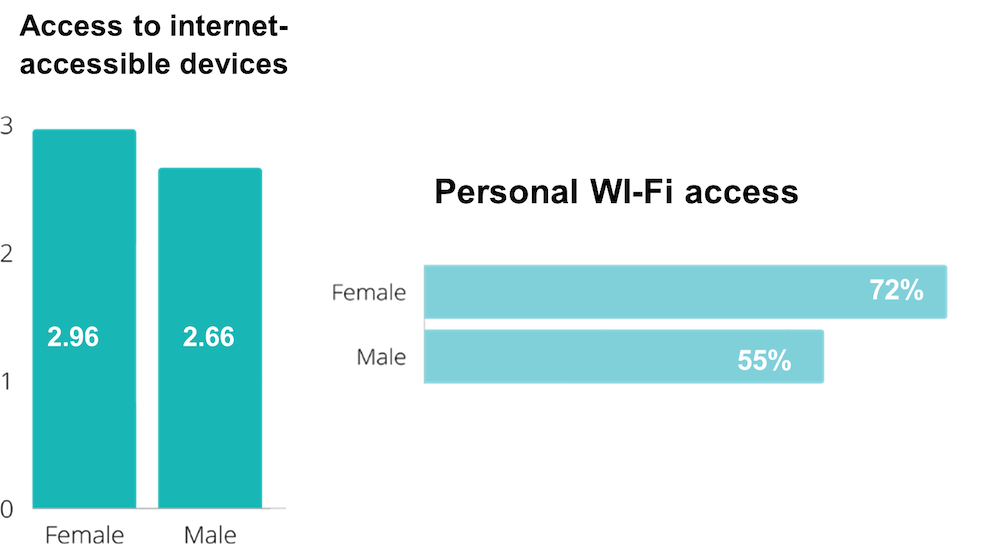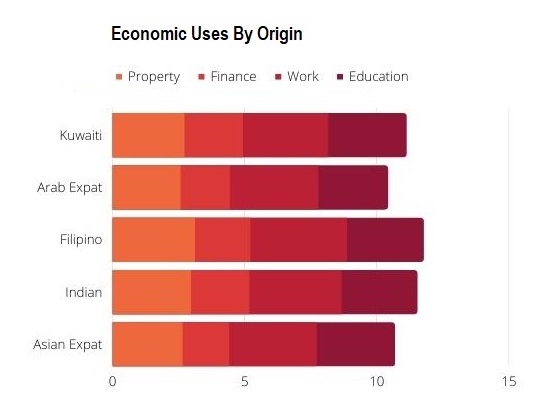by Fahed al-Sumait

Restrictions on physical mobility and human interaction brought about by the COVID-19 pandemic have made clear the potential for Information and Communication Technologies (ICT) to help societies function during times of crisis. Indeed, even before the pandemic, the pace and pervasiveness of ICT diffusion was already unprecedented in history. The pandemic further accelerated the adoption and application of digital technologies for many, but for those communities on the other side of the digital divide, the gap only widened.
Today, countries and organisations are scrambling to take advantage of what many term the digital transformation of society. Doing so opens possibilities to improve e-commerce, job creation and efficiency, education and service delivery, as well as generating countless opportunities for better social connectivity and personal well-being. However, the pandemic also illustrated the disappointing limitations of ICTs when it comes to meeting the needs of already marginalised communities, even within the world’s most wealthy and digitally connected countries. Digital inequalities within the Middle East and North African (MENA) region specifically were already among the largest globally and may have become even more pronounced following the COVID-19 outbreak.
This blog post looks specifically at Kuwait as one of the MENA’s most digitally and economically privileged nations. There, digital inequalities not only remain highly prevalent, but they significantly hinder the kinds of digital transformation that can help transition Kuwait from its current dependence on hydrocarbons towards a more knowledge-based economy.
Measuring Digital Inequalities in Kuwait
The DiSTO-Kuwait project represents the first application in the Middle East of the global ‘From Digital Skills to Tangible Outcomes‘ methodology for evaluating digital inequalities. DiSTO projects take as a starting point the idea that online and offline forms of inequality are mutually constitutive. Traditionally disadvantaged groups in society are more likely to have greater limitations and negative outcomes from their ICT use than those who are more privileged. While this understanding helps scholars and policymakers more accurately address the nature of digital inequalities, it simultaneously highlights the underlying role played by socio-economic conditions that exist in a given context, and increasingly into which ICTs are being interwoven.
Kuwait’s ICT infrastructure and its digitally active population are among the region’s (and the world’s) highest. Yet, this potential does not necessarily translate into better economic, social, or personal benefits within the digital realm compared to other similar, or even less-advantaged countries. For example, in terms of its conduciveness to ICT development, the 2021 Portulans Network Readiness Index ranks Kuwait 55th of 130 economies, down 1 place from 2019 and lowest among the Gulf countries. CISCO’s 2019 Digital Readiness Index reflects similar findings. To investigate how digital inequalities may contribute to this situation, it is first necessary to measure the distribution of digital capabilities and their associated outcomes among the country’s highly diverse population.
Kuwait’s Digital Inequalities Report 2022 is a nationally representative survey measuring ICT access, skills, uses, and outcomes. Selected findings are presented here to illustrate important demographic trends, with further details available in the full report.
A Closing Gender Gap?
According to the International Telecommunications Union (ITU), the UN agency specialising in ICTs, in 2021 the digital gender divide in the MENA region remained greater than the world average. However, in contrast to this regional tendency, Oman, the UAE and Kuwait each show higher internet use among women than men. Our project confirmed this finding for Kuwait, with women on average demonstrating higher personal internet use, more access to devices and producing more work-related outcomes than men. That said, a small gender gap persists in terms of specific skill types, with technical, creative, and information-navigation skills all ranking lower among women.

Although women use ICTs more for work and yield higher achievements in this area, their satisfaction levels with doing so and the outcomes they achieve are both lower. One explanation is that ICT tools and/or expectations governing their use, especially for work, may be implicitly designed with preferences toward male users, even if pressures to use them are similar for both genders. As long as women remain underrepresented in areas such as technology design, content creation, and organisational leadership, the digital experiences tailored to their specific needs, which could close remaining gender gaps, are likely to remain elusive.
Age Matters

The largest inequalities in digital skills occur between age groups. For all skill areas combined, those aged 18-25 show double the average level of those over 40 years old. This younger cohort also possess greater access to internet-accessible technologies. One area where these conditions fail to translate into productivity, however, is the use of ICTs for work or school. In this category, the youngest group scores lower than any other working-age populations. So, policies and practices that aim to better incorporate young people’s digital capabilities into the workplace and schools can help the country capitalise on this latent talent pool. Innovative and collaborative approaches are also needed to aid residents over 40 with ‘upskilling’ their capabilities and ensuring that relevant digital content is readily available and accessible. Failing to do so will only widen the existing age divide.
Occupational Disparities

As with age, differences in skill levels are also notable according to a person’s occupation. Understandably, digital skills are most concentrated among students and employees, who are more likely to use ICTs in their occupations. However, the unemployed also scored high in their digital skill levels. This suggests that considerable untapped potential may exist outside of the labor market. According to skill types, social skills are the highest for every group (by occupation and for society as a whole). Concerningly, information-navigation skills were the lowest, even though seeking reliable information is a primary driver for most people to go online regardless of their occupational status.
The Importance of Education
A person’s level of education obtained is among the most persistent predictors of a digital divide the world over. In Kuwait, where only about one in four residents holds higher than a high school education, this divide is particularly stark. Despite nearly universal access to, and use of, the internet in Kuwait, residents with the least education still face a wide range of barriers, such as limitations in how they get online, the content they can access, their quality and quantity of internet uses, the skills they possess, and the outcomes they can realistically achieve.
Origin’s Role

Kuwait is an expatriate-majority state with foreigners comprising two-thirds of all residents. A person’s country of origin does not play a role in their digital skills levels, though it is significant for ICT access, uses, and outcomes. For example, among many of the Asian expatriates, who comprise about a third of the population, a smart phone is their only means for accessing the internet. In contrast, Kuwaitis have the least barriers to access, yet they engage less in several online activities compared to many other nationalities, such as buying and selling goods and services, or using ICTs for work.
The Next Step
Having demonstrated important areas of discrepancy between groups, the report argues that the next step is to effectively align these gaps with existing and future efforts aimed at attenuating digital inequalities. Regulators, educators, private- and third-sector organisations can each contribute to Kuwait’s digital transformation by recognising and addressing inequalities through monitoring, educating, and engaging both citizens and non-citizens alike. Priority should be given where multiple at-risk identities intersect, for example, among older, male, expatriates of Arab or Asian origin holding rudimentary levels of education; a profile that describes a significant portion of the country’s residents.
Creating policies and practices that help improve everyone’s digital experiences will foster greater equity, engender higher participation, and contribute to society-wide benefits in terms of both productivity and well-being. Doing so will also help Kuwait to transition society more effectively from an economy reliant upon oil tankers to one that is better accessible – to everyone – through tablets.






